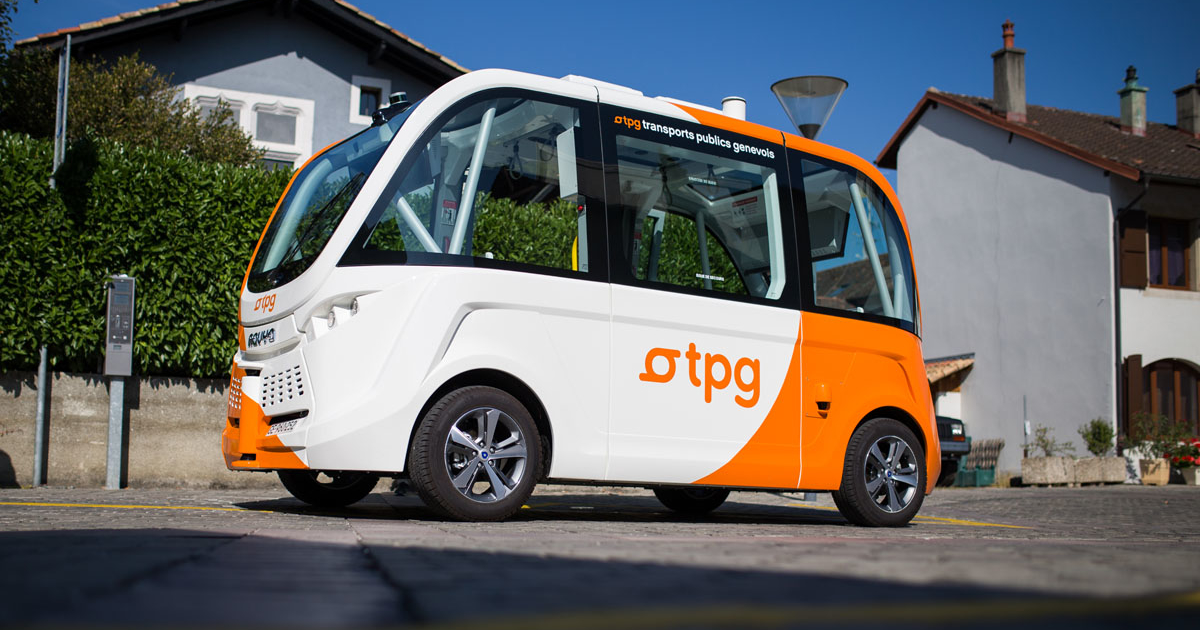The use of autonomous vehicles in public transport has the potential to revolutionise the complete landscape of public transport, affecting at the same time all aspects of urban and suburban living, from daily living to urban development and social planning.
However, in order to unleash this potential, new, disruptive public transport services need to be proposed and implemented, creating a new urban experience for the users. Furthermore, the legislative and regulatory frameworks of the different countries and regions need to be adapted accordingly.
AVENUE’s scope and identity, as summarised below, serve both above mentioned change of directions:
Overview of AVENUE Scope and Identity
- Application field: Urban transport automation; Public transport
- Mode of transport: Automated electric minibuses
- Targeted areas: Urban areas of low or medium demand, low or medium accessibility
- Target users: All; Specifically the elderly, people with disabilities/Persons with Reduced Mobility (PRM), vulnerable users
- Demonstration locations: 4 city demonstrators; 2 city replicators
- Project duration: 48 months (with a 6-month extension)
- Technologies employed: Data fusion; Data & visual analytics; I2V, V2I, V2V communication, IoT
- Services provided : In-of-vehicle, out-of-vehicle, in/out; Increased road safety, vehicle speed & distances served; Improvement of service quality and value
- Ultimate goal : To pave the way for full-scale introduction of disruptive door-to-door services and ‘Mobility Cloud’ strategies
In relation to the above, AVENUE’s goals were :
- To demonstrate the advantages of the use of autonomous vehicles in urban and suburban shared transport
- To evaluate the cost-benefits, socio-economic and environmental impacts of the use of autonomous shared public transport vehicles under different public transport models
- To assess the safety and reliability of autonomous shared public transport vehicles for users
- To propose a roadmap and business plans for the large-scale adoption and deployment of autonomous vehicles for public transport
These goals were achieved with the design, development and evaluation, via large-scale pilots and demonstrators, of new innovative public transport services based on autonomous vehicles in urban and suburban environments, the transport services having been fully integrated into existing public transport services, with security and safety being the cornerstone of the demonstrators.
The duration of the project was 48 months (with a 6-month extension) and we have been rolling out shared public service transport via autonomous vehicles in different configurations from day one of the project, and for its entire duration. We also experimented new services, evaluated methods for safe and high quality road behaviour responses and studied the socio-economic and environmental impacts of autonomous vehicles shared public transport.
The vision behind the project was to develop and demonstrate economically and environmentally viable, highly personalised, safe and secure transport services, where the autonomous vehicle services (like itineraries, time tables, etc.) are dynamically adapted to the individual user needs and integrated into the public transport ecosystem of the cities. We dream of public transport services where there will be no time tables and no predefined destinations, with tens of mini, medium and large shared autonomous vehicles roaming the city in a seemingly random way, picking up and dropping off passengers anywhere and at any time, but which in reality will be highly coordinated by sophisticated itinerary optimization algorithms. With the use of mobile technologies and cloud IT services, passengers will define their needs for a ride, and based on nearby vehicle availability, current vehicle itinerary, vehicle load, and other announced (or anticipated) passenger needs (and possibly on the acceptable price), the vehicle itinerary will be modified to pick up the passenger from the requested point and drop them off at their destination or at an acceptable nearby point. All this in full coordination and use of other existing transport means, so that we can offer the optimal way for passengers’ travel needs.
It is clear that before reaching this long-term vision, there will be a long period where autonomous vehicles will co-exist with “traditional” vehicles, where passengers will have doubts regarding the safety and efficiency of autonomous vehicles, where different citizen groups will oppose the autonomy of vehicles for economic or other reasons (fear of job loss, changes in urban planning, safety considerations, etc.) and where the use of the supporting IT services will not be optimal for all citizens. The project has aimed to provide a roadmap for the introduction of autonomous public transport vehicles, while dispelling at the same time convincing answers to the fears citizens and public authorities may have.
Demonstration in AVENUE
To be noted, NAVYA runs pilot tests of minibuses in several cities worldwide (Europe, United States, Asia, Australia). The selected 4 full-scale demonstrators (Geneva, Lyon, Copenhagen and Luxembourg) have been integrated into the project from day one, while other cities (replicators) have arrived later during the project.
AVENUE’s perspective
For the all the above reasons, the project has approached the problem from 8 different angles:
- Autonomous vehicle road behaviour
- Smart city infrastructure for I2V and V2I communication for improved road safety
- Transport services
- In-vehicle Services
- Out-of-vehicle Services
- Socio-economic impacts
- Privacy
- Security, safety and ethical issues
Demonstrator Sites
AVENUE has been organised around 4 use cases of autonomous vehicles for public transportation, which represent the “large-scale demonstrators” of the project in Geneva (Switzerland), Lyon (France), Copenhagen (Denmark) and Luxembourg (Luxembourg).


